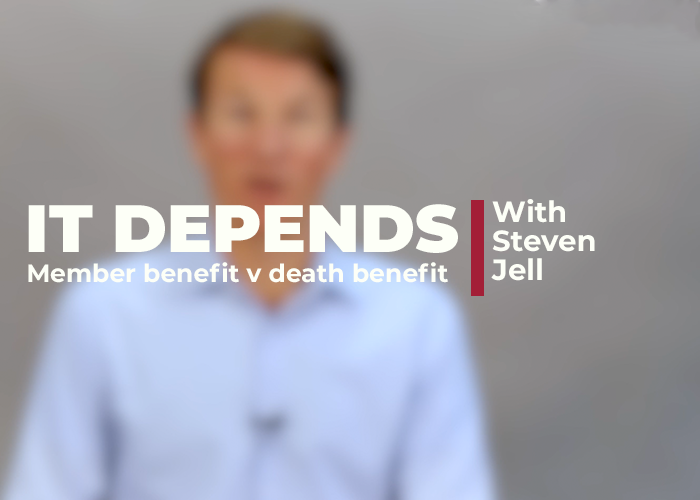Authored by: David Grace and Stephanie Gibbons
In a recent decision, the High Court of Australia considered the nature of an ‘understanding’ for the purposes of the restrictive trade practices provisions within Part IV of the Competition ...

In this week’s edition of ‘It depends’, senior associate Steven Jell looks at the difference between a super member benefit and a superannuation death benefit. Hear more from Steven in the upcoming webinar with Clinton Jackson and Keeghan Silcock on 4 August. Register now.
Hi. Welcome to It Depends. During this edition, we’re going to look at the difference between a super member benefit and a superannuation death benefit.
So, there are limitations on the circumstances in which an individual can access their superannuation but a member benefit is described as a payment to you, the member, because you are a member of the superannuation fund.
A death benefit is a payment to you following another person’s death because that other person was a member of the fund.
The definitions that I’ve just mentioned are taken directly from the tax legislation and there can be a different tax treatment depending on whether a superannuation payment is a member benefit or a death benefit. For example, a person over the age of 65 can access their superannuation tax free. However, if the same person dies with assets remaining in superannuation, then there could be tax payable when their remaining superannuation entitlements leave the fund. Most people want to leave their superannuation in the superannuation environment as long as possible because of the tax concessions that are offered through superannuation. However, if we leave it too long and there are remaining entitlements in a superannuation fund at that individual’s death, then there could be tax payable when those amounts leave the superannuation fund.
It depends. There can be quite a fine line when it comes to determining whether a payment is a member benefit or a superannuation death benefit and where members are trying to complete a superannuation member withdrawal shortly prior to their death. What we see is that most strategies like this fail to take into account all of the relevant considerations.
So, there are many things to consider when looking to implement a member withdrawal shortly prior to a person’s death. We’ve got to look at, well, who’s the person making the request? Is it the member individually or is it their attorney? Who controls the fund? So, is it directors of the corporate trustee or we dealing with individual trustees when it comes to approving the payment to the member? What is the trust deed say? What happens to that individual’s estate planning considerations if the payment is made from the fund prior to their death, and the assets are then held in their personal name. What are the assets that we’re looking to transfer? Do we need to sell assets to complete the payment or are we looking to transfer assets in specie? The reality is, if all of these things aren’t considered appropriately, the tax consequences of getting a strategy like this wrong can be substantial.
So, again, it depends. If you’re considering implementing a strategy to make a member payment shortly prior to someone’s death, then the answer for each person might in fact be slightly different.
If you or one of your clients want some assistance with implementing a member payment shortly prior to a person’s death, please contact me or one of the team. Thank you for watching this edition of It depends.
This publication is for information only and is not legal advice. You should obtain advice that is specific to your circumstances and not rely on this publication as legal advice. If there are any issues you would like us to advise you on arising from this publication, please let us know.
Subscribe to our interest lists to receive legal alerts, articles, event invitations and offers.



Cooper Grace Ward acknowledges and pays respect to the past, present and future Traditional Custodians and Elders of this nation and the continuation of cultural, spiritual and educational practices of Aboriginal and Torres Strait Islander peoples.
Fast, accurate and flexible entities including companies, self-managed superannuation funds and trusts.